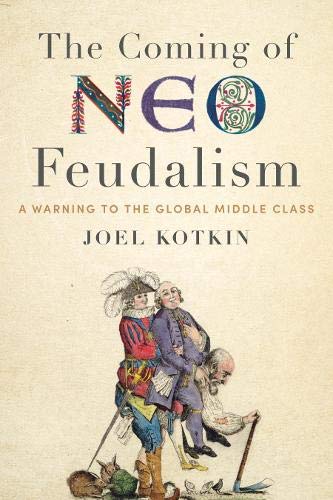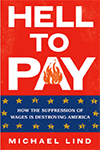Geography
Why America’s Free Market Economy Works Better in Some Places than Others
- Login to post comments
Gov. Newsom Throws California's Interior Under the Bus
Gov. Gavin Newsom has committed himself to look for ways of “unlocking the enormous potential” of the Central Valley, but in reality he seems more interested in slamming the door to its prosperity behind him.
In two critical moves the former San Francisco mayor has shown his incomprehension of how to address the needs of the vast California interior, particularly the over 6.5 million people in the 17 counties of the Central Valley. read more »
- Login to post comments
Democracy is For the Dogs
With a new round of state and local elections just around the corner, I am regularly asked about what brings Americans out to the polls and helps them politically engage them with their communities. read more »
- Login to post comments
The Expanding and Dispersing San Francisco Bay Area
This decade has witnessed an unprecedented expansion of the Greater San Francisco Bay Area (the San Jose-San Francisco combined statistical area or CSA), with the addition of three Central Valley metropolitan areas, Stockton, Modesto and Merced. Over the same period, there has been both a drop in the population growth rate and a shift of growth to the Central Valley exurban metropolitan areas. read more »
- Login to post comments
Three Studies That Show Density Doesn't Determine Car Travel
Recent research sheds new light on the critical issue of the link between car travel and urban density. Conventional planning wisdom has it that increasing development density bestows benefits, most importantly that of reducing driving. This effect seems almost self-evident: more compaction, shorter distances, lower VMTs. Peter Newman and Jeffrey Kenworthy’s (1989) Cities and Automobile Dependence reinforced this intuitive assumption with their extensive and in-depth study (1986) which effectively sealed the case for thirty years. read more »
- Login to post comments
Dreaming of an America Where Solutions Trump Ideology
In the ever-intensifying battle between red and blue, the consultants, fixers and self-serving media thrive, but America suffers.
Now we seem destined to face a graphic battle of extremes between Donald Trump and Elizabeth Warren, two self-styled populists best suited to exacerbating polarization while both sides toss around charges of “treason” and embrace the idea of an inevitable civil war. read more »
Stop Overlooking the Richness of Rural Life
From questions of upward mobility and opportunity to concerns about access to health care and education, rural America clearly isn’t perfect. read more »
- Login to post comments
Around San Francisco’s New South of Market Transit Center
In the 1980s, the city of San Francisco experienced a strong reaction against continued development of its dense financial center skyscraper district north of Market Street. that the term Manhattanization was popularized by the alternative biweekly, San Francisco Bay Guardian, which channeled the interest of many residents to preserve both their neighborhood and the iconic, historic buildings in downtown San Francisco before they were replaced by new, taller structures. read more »
- Login to post comments
Where Salaries Go Furthest in 2019: The Small-City Advantage
Big cities are the engines of the modern economy. They offer workers a range of opportunities — and employers a range of workers, customers, and infrastructure — that smaller places generally can’t match. But when it comes to what many job seekers care about most, smaller cities often are best. In particular, for most jobs, salaries are higher in smaller places after accounting for the cost of living.
read more »
- Login to post comments
Ridership Falls Another 2.9 Percent in June
June 2019 transit ridership was 2.9 percent lower than in June 2018, according to the Federal Transit Administration’s most recent data release. Ridership dropped in all major modes, including bus, commuter rail, heavy rail, and light rail. Ridership also dropped in 41 of the nation’s 50 largest urban areas, declining even in Seattle, which had previously appeared immune to the decline that is afflicting most of the nation’s transit industry. read more »
- Login to post comments






















